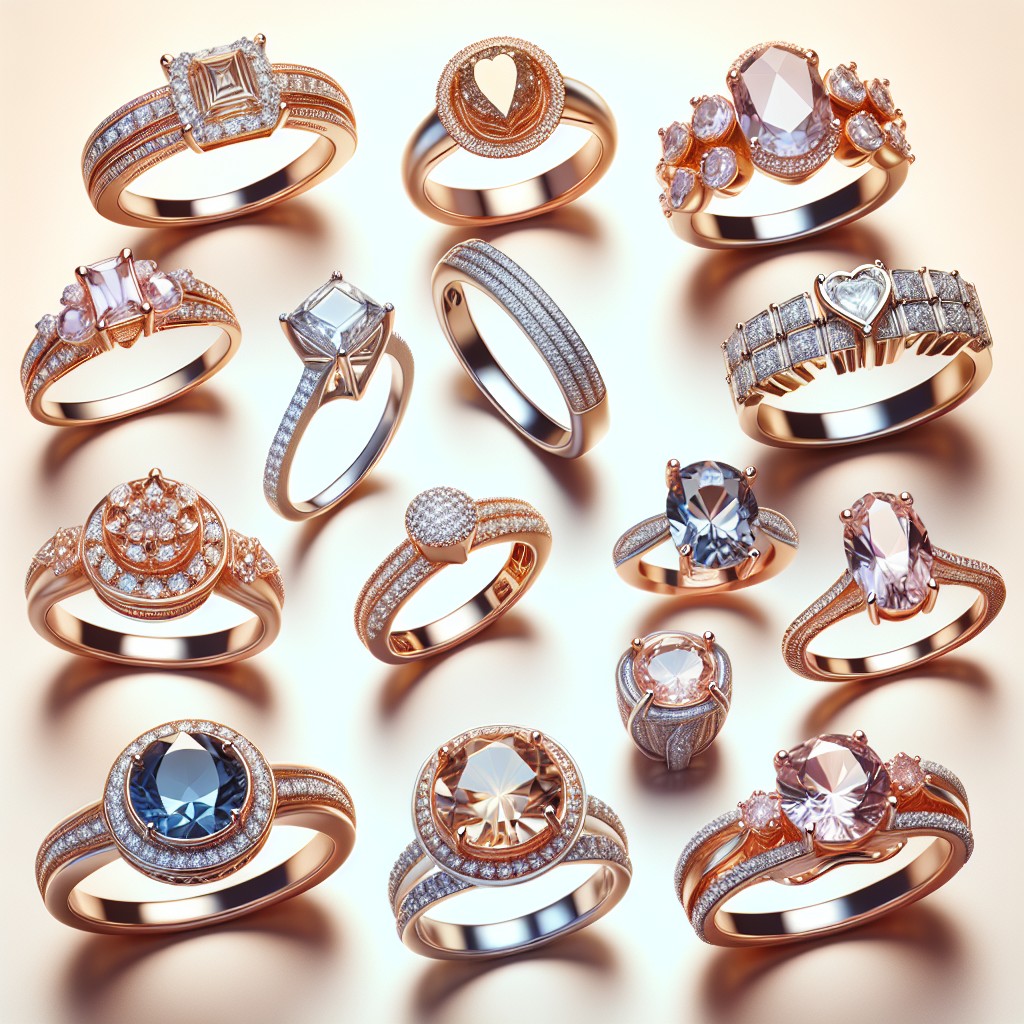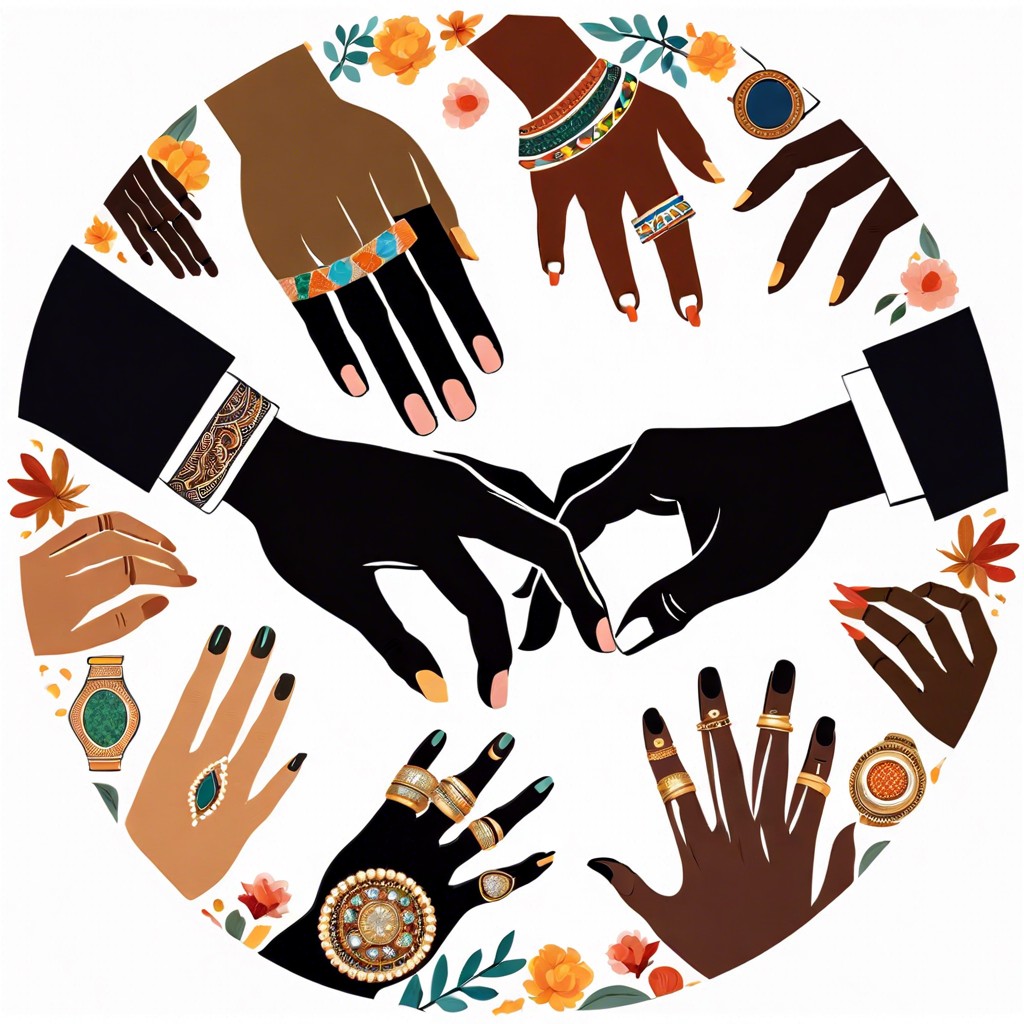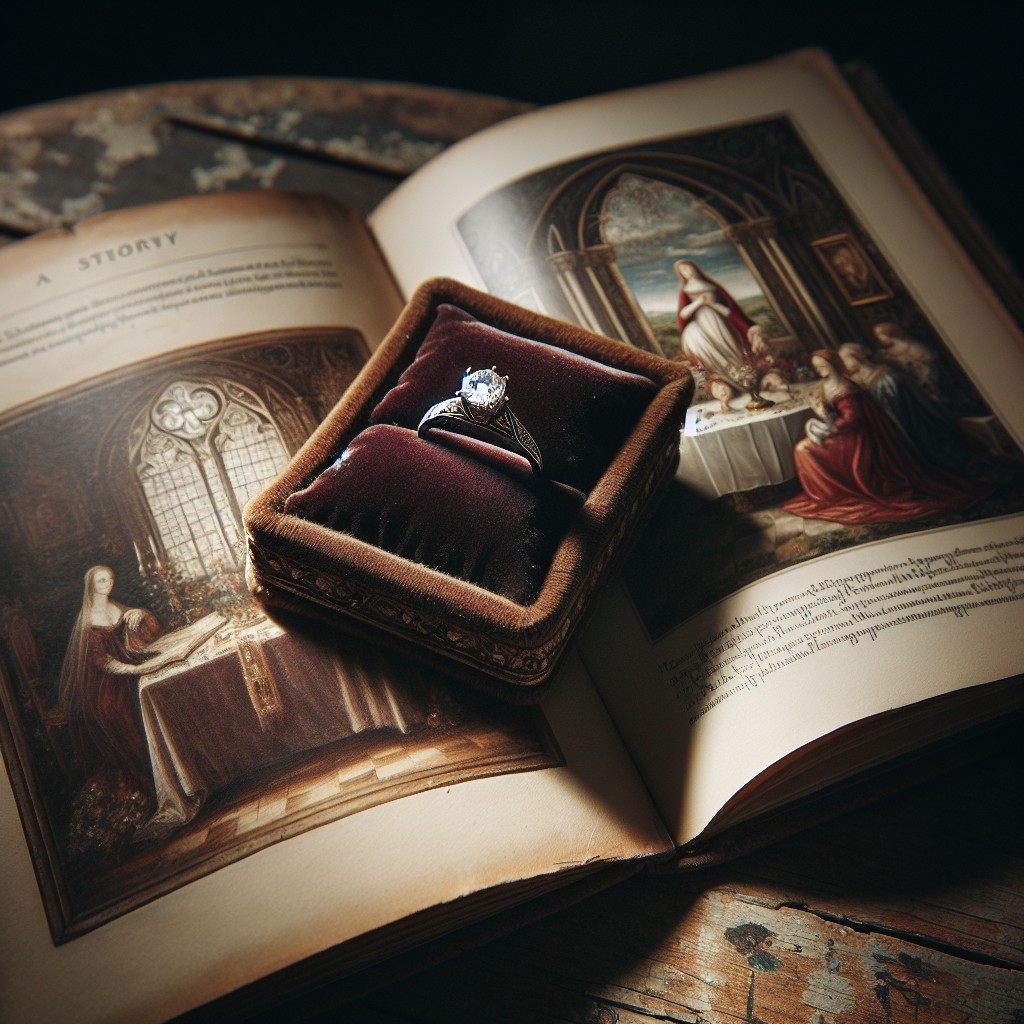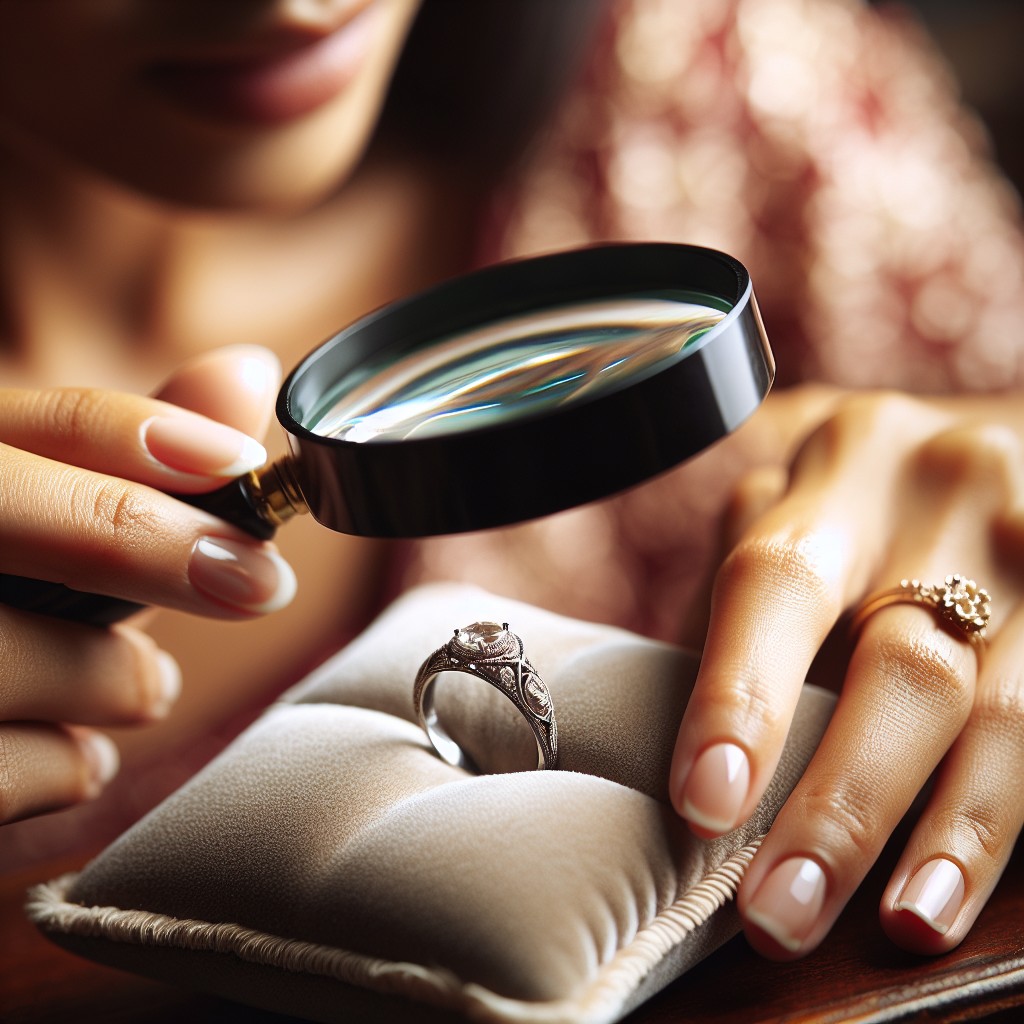This article provides a comprehensive overview of factors that influence the cost of an engagement ring, offering readers a practical guide for establishing a realistic budget while shopping for that perfect piece.
Key takeaways:
- Engagement ring averages ,000-,000, national average ,500
- Factors: market trends, economic factors, cultural norms, personal choices
- Budget: evaluate finances, research/compare, set priorities, consider financing
- Ring styles: solitaire, halo, three-stone, pavé, vintage-inspired, custom
- Diamond prices: cut, color, clarity, carat weight, balance the 4Cs
The Average Cost of an Engagement Ring in Today’s Market

Understanding the average cost of an engagement ring can provide a helpful starting point for your ring shopping journey. Currently, many couples spend between $1,000 to $5,000 on this significant purchase, with a national average in the United States hovering around $5,500. However, these figures can fluctuate widely based on personal preferences, economic conditions, and regional cost variations.
Some key points that establish this average include:
- Market Trends: Industry reports and surveys frequently update the average cost, giving insights into current consumer spending habits.
- Economic Factors: Prices may rise or fall with economic shifts, such as inflation or changes in supply and demand for precious metals and gemstones.
- Cultural Norms: In different cultures or regions, spending expectations can vary. For example, some may adhere to the notion of spending the equivalent of two months’ salary on a ring.
- Personal Choices: Ultimately, the average cost is a benchmark, not a rule. Individual selections on materials, design, and gemstones can dramatically alter the price.
Remember, the average cost is just that – an average. Your choice should be guided by personal budget and significance rather than societal averages.
Factors That Affect the Cost of an Engagement Ring
Understanding what drives the price of engagement rings can help you make an informed decision:
- Diamond Characteristics: The “Four Cs” – cut, clarity, color, and carat weight – are crucial. A higher-grade diamond in these areas typically means a higher price.
- Metal Choice: Platinum rings are often the most expensive, followed by white, yellow, or rose gold. The metal’s purity, reflected in karats, also impacts cost.
- Ring Design: Elaborate designs with multiple diamonds or intricate metalwork can increase the ring’s price due to the skill and time required to craft them.
- Brand Reputation: Designer rings often command premium prices due to brand prestige and design exclusivity.
- Custom Work: Personalizing a ring, either through full custom design or modifications, entails additional labor, contributing to a higher price.
- Market Fluctuations: The costs of precious metals and gemstones fluctuate with market conditions, which can affect ring prices.
By considering these factors, you can pinpoint where your preferences lie and what elements are worth the investment for you.
How to Budget for an Engagement Ring
When setting a budget for an engagement ring, consider your financial situation without following outdated salary rules. Traditionally, it was suggested to spend about two months’ salary on an engagement ring, but today’s approach is more about what feels comfortable for you and your partner. Here are a few points to help you navigate the budgeting process:
- Evaluate Finances: Look at your income, expenses, and savings to decide on a realistic amount you can afford without going into debt.
- Research and Compare: Explore different retailers and prices online and in-store to get a sense of what your budget can get you.
- Set Priorities: Decide which features—size, quality, cut, or clarity—are most important to you and allocate your budget accordingly.
- Think Long-Term: Remember that the engagement ring is just the start. Leave room in your finances for future expenses such as the wedding, honeymoon, and your life together.
- Consider Financing Options: If you opt for financing, choose a plan that’s manageable and aligns with your financial goals. Avoid high-interest options that might put you in a difficult position later on.
- Alternative Stones and Metals: Research alternative stones and metals that might be more affordable but equally beautiful, such as moissanite or white sapphire, and consider non-traditional metals.
- Remain Flexible: Be open to adjusting your budget as you shop. If you find the perfect ring that’s a little above or below your budget, re-evaluate if it’s worth the alteration in spending.
Remember, the engagement ring symbolizes your commitment, not your financial worth. Choose a ring that fits your budget and reflects your relationship.
Different Engagement Ring Styles and Their Costs
Understanding the varying costs associated with different engagement ring styles can help you choose a ring that fits your budget while still capturing the essence of your partner’s style.
Solitaire Setting: Known for its classic simplicity, featuring a single diamond, the solitaire’s cost largely depends on the diamond’s four Cs (cut, color, clarity, and carat weight), with minimal impact from the setting itself.
Halo Setting: With a circle of smaller diamonds encircling the center stone, halo rings offer a way to enhance visual size and sparkle. Be prepared for a higher price tag due to the additional diamonds.
Three-Stone Setting: Symbolizing a couple’s past, present, and future, this style includes side stones, which can increase the ring’s cost, dependent on the size and quality of all three diamonds.
Pavé Setting: The pavé style features tiny diamonds along the band, adding to the overall brilliance. Given the extra stones, prices are typically higher than a basic band but vary based on the number of pavé diamonds.
Vintage-Inspired Settings: These intricate styles with detailed craftsmanship can run higher in price due to the complexity of the designs and the handwork required.
Custom Designs: Tailored to personal specifications, custom rings can vary widely in cost based on the uniqueness and materials chosen.
As you browse, note that metal choice—whether platinum, gold, or alternative metals—also plays a critical role in the ring’s final price. Remember, it’s the thought and meaning behind the ring that truly matters, not just the price tag.
How Ring Prices Vary By Diamond Size and Quality
When considering diamond size, prices typically rise with carat weight. However, two diamonds of equal carat weight can have significantly different costs based on their quality. The quality of a diamond is evaluated using the 4Cs: cut, color, clarity, and carat weight.
- Cut: A well-cut diamond will have more brilliance and sparkle, and thus will be more expensive than a poorly cut diamond of the same size.
- Color: Diamonds are graded on a scale from D (colorless) to Z (light yellow). The closer to colorless, the higher the price.
- Clarity: Fewer imperfections, known as inclusions, result in a higher clarity grade and, accordingly, a higher price.
- Carat Weight: This refers to the diamond’s weight, not size. Higher carat weight often increases the price, but two stones of the same weight can vary in price due to differences in cut, color, and clarity.
Additional factors, such as the presence of fluorescence or the diamond’s shape, can also influence the price. It’s essential to balance the 4Cs to find the best diamond within a predetermined budget. Remember, a smaller, higher-quality diamond can be more valuable than a larger diamond of lower quality.
FAQ
How much should the average engagement ring cost?
The national average cost of an engagement ring stands at $5,500, although the expenditure can range between $1,000 to $4,000 for nearly half of ring buyers, with 9% of shoppers spending less than $1,000.
How much should be paid for an engagement ring?
The traditional cost of an engagement ring is typically equal to three months' salary.
Is $5000 alot for an engagement ring?
While the perception of a $5000 budget for an engagement ring varies with individual financial situations, it generally allows for a good range of appealing choices.
Is $1000 enough to spend on an engagement ring?
Indeed, $1000 is sufficient to purchase an engagement ring, usually granting access to smaller carat pieces or alternative options like lab-grown diamonds which often provide better value.
What is the most common price range for engagement rings?
The most common price range for engagement rings is between $1,000 and $5,000.
What factors can influence the price of an engagement ring?
The price of an engagement ring can be influenced by factors such as the type of metal, the size and quality of the diamond or other gemstone, the design complexity, and the brand reputation.
Can you get a quality engagement ring for under $1500?
Yes, you can get a quality engagement ring for under $1500 by carefully selecting the gemstone, metal, and design.
Keep reading:





